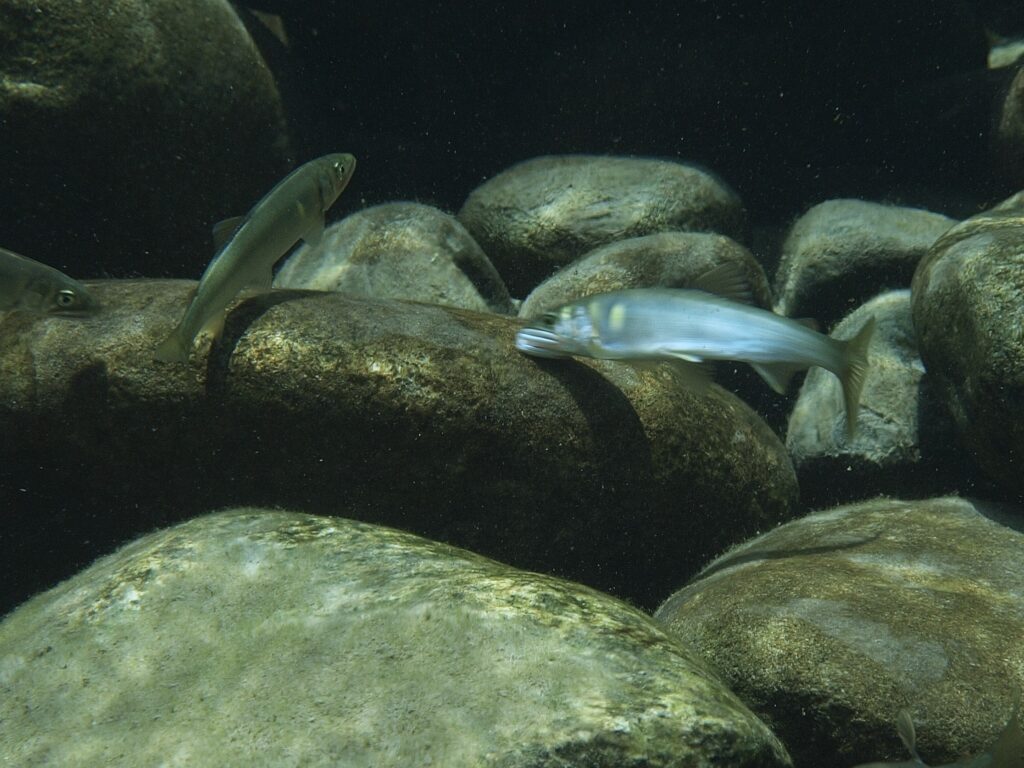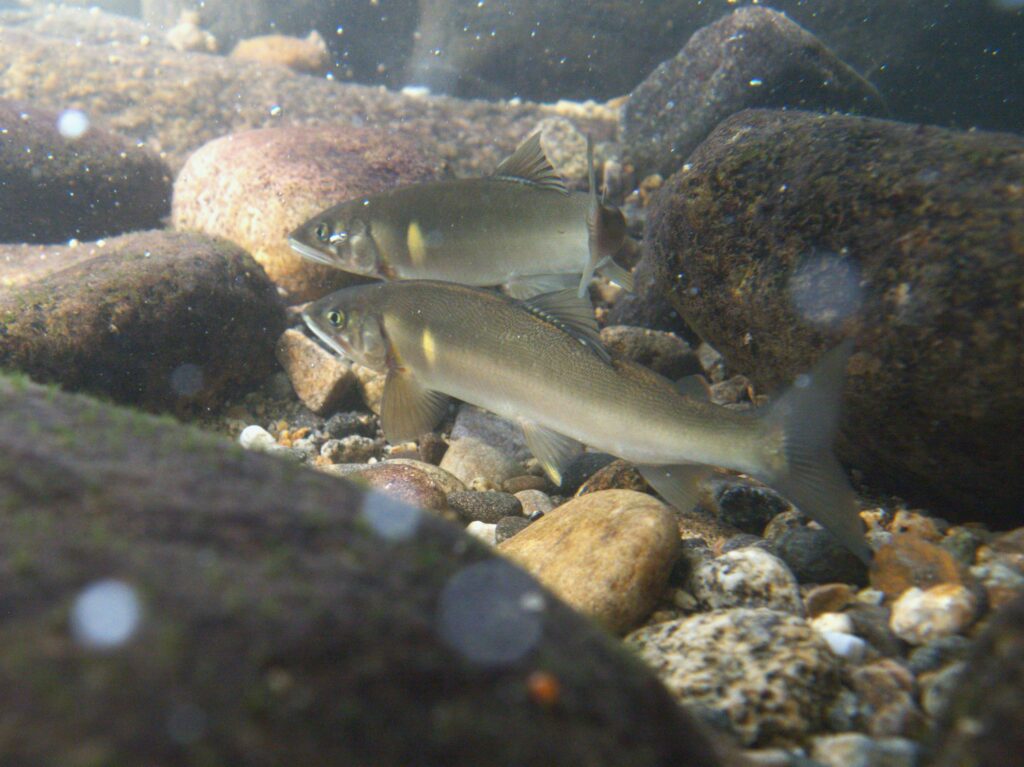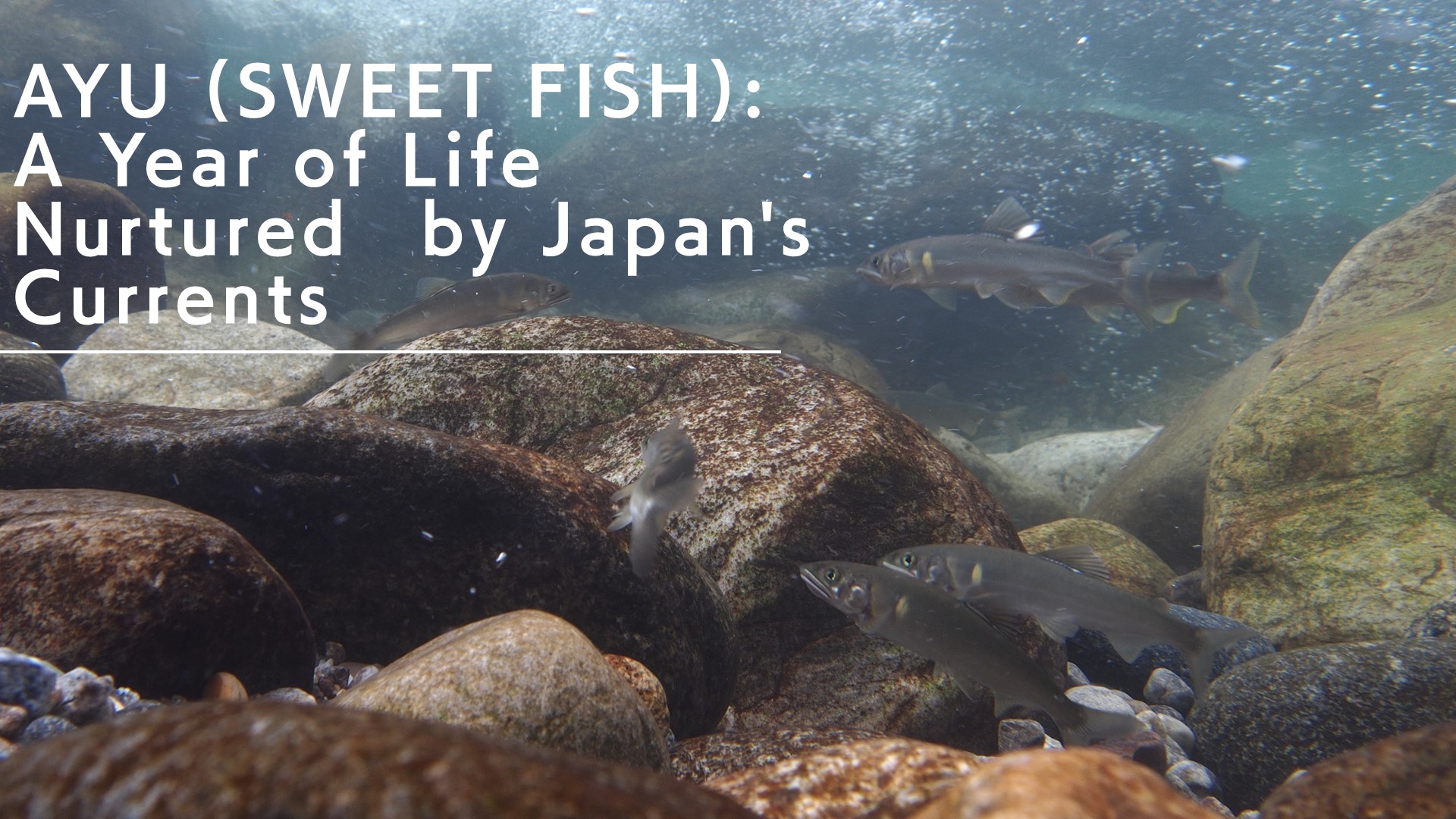A river fisherman named Iori, working in the Shimanto River, speaks about the remarkable intelligence of Ayu (sweetfish). “Ayu are truly smart. When a casting net is thrown, they lie down on the riverbed and wait until the net passes overhead. It’s unbelievable that a fish, which lives only for a year, can do this,” he says with admiration. This fact shows that Ayu are more than just ordinary fish.
Ayu, a type of sweetfish, belong to the Plecoglossidae family. They primarily inhabit gravel-bottomed rivers and have a slender, silver-colored body, typically measuring 15 to 25 cm in length. Ayu are anadromous fish, moving between rivers and the sea throughout their lives. Born in autumn, they immediately descend to the sea and return to the rivers the following spring. Then, they spawn and die in the autumn of that year.
During their growth phase, Ayu feed by scraping algae off the surfaces of stones. They establish territories around quality stones and drive away other Ayu by body bumping. This behavior is utilized in “Tomozuri” (friend fishing), a unique fishing method popular in Japan. Additionally, cormorant fishing in the Nagara River in Gifu Prefecture is well-known, attracting tourists as a method of catching Ayu.

Ayu are widely distributed in the rivers of East Asia, with Japan being the core of their distribution. Many Japanese rivers, as they flow from the sea upstream, first reveal gravel rapids, and further upstream, large stones become prevalent. Ayu feed and grow in the upstream stony rapids and spawn in the downstream gravel rapids. The juvenile Ayu then descend the river to the sea. This is not the case for continental rivers, which are larger and longer, necessitating a long journey from the sea to reach stony rapids. Thus, short and steep rivers like those in Japan provide an ideal habitat for Ayu. One could say that Japan’s rivers have played a crucial role in the life cycle of Ayu.

Ayu are cherished as a symbol of Japanese summer, enjoyed in various dishes such as grilled with salt, narezushi (a type of fermented sushi), and stewed preparations. Especially grilled, their unique aroma, reminiscent of watermelon, is loved by many as a symbol of summer in Japan. As Iori says, the wisdom and ecological adaptability Ayu display within their short lifespan of a year are remarkable. They are more than just fish, playing a unique role in Japan’s natural environment.



コメント